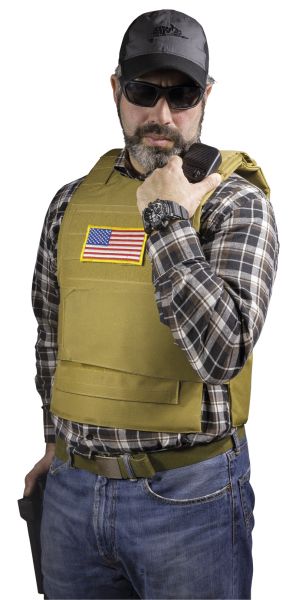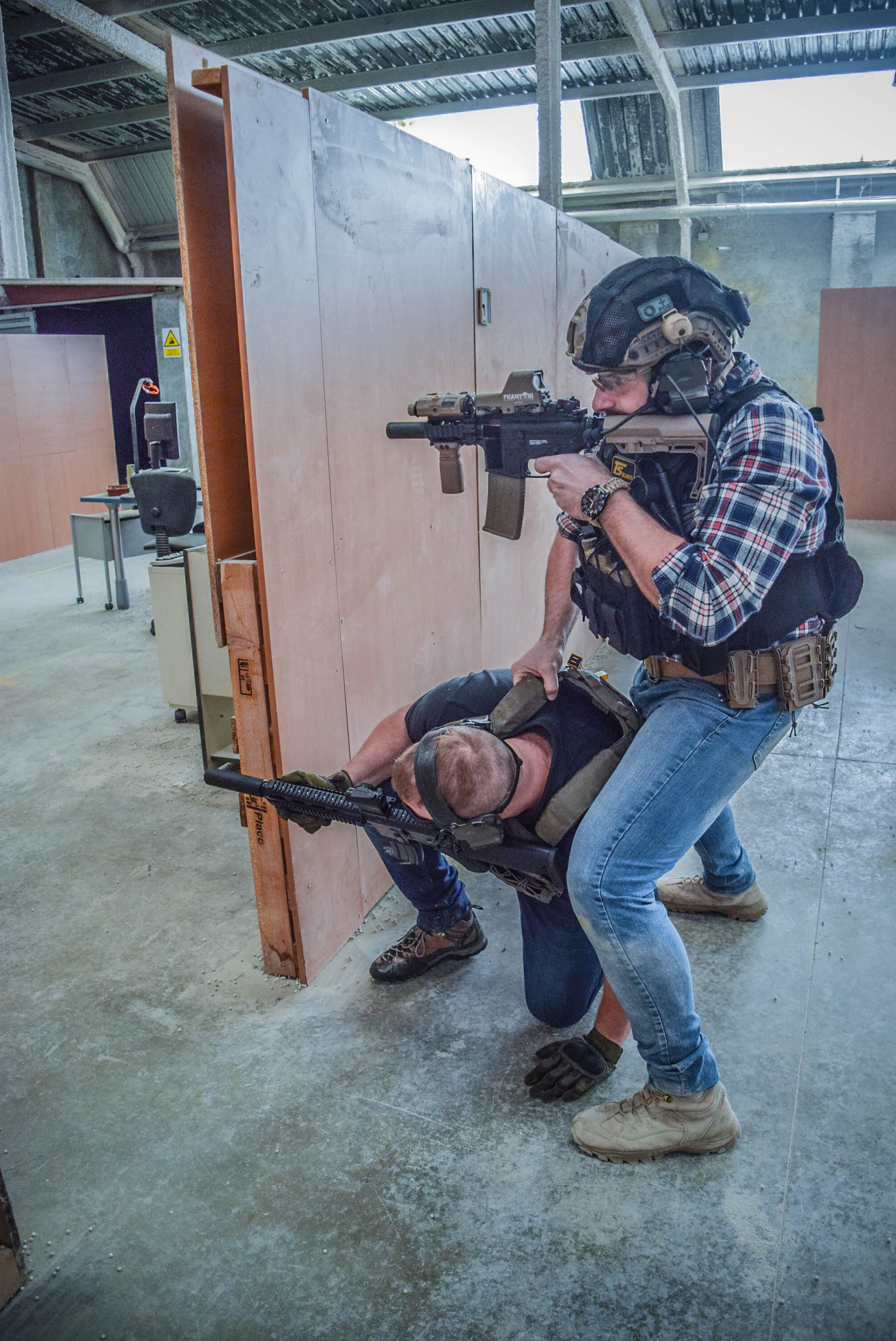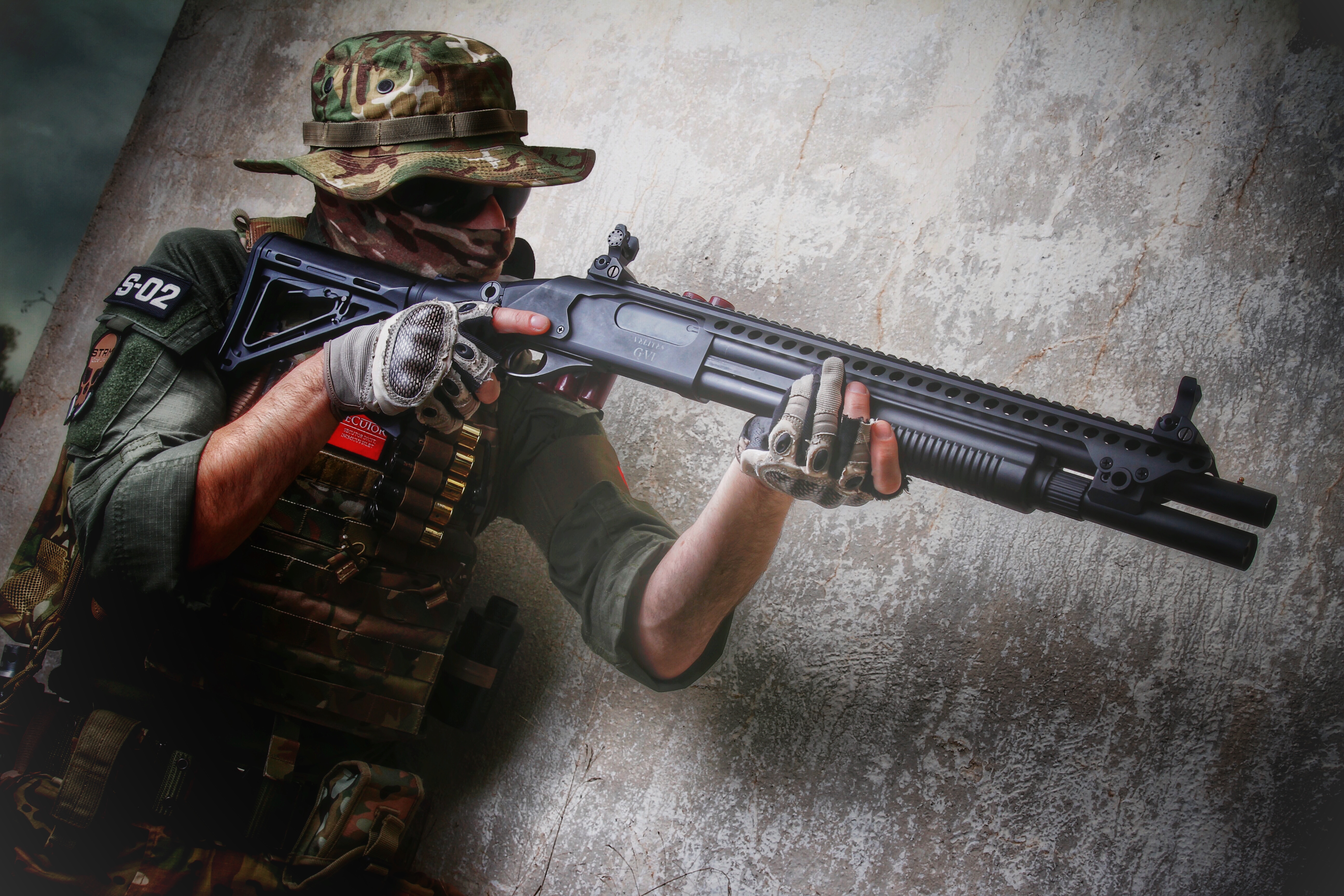
Text: Adrián Lizalde & Angela Chen
Photography: STRM Airsoft
Historically, CQB (Close Quarters Battle) is a tactical concept that defines short-distance combat, which is usually found in urban or built-up environments. To such an extent that operators are sometimes forced to use hand-to-hand weapons.
That is why it is one of the most important training and retraining activities in special operations units. The success or failure of the action is determined in a matter of seconds and that is why they train to the point where they do not even have to think about what to do, they simply react to the situation.
This is a rather fast game modality in airsoft, in which often rookies eliminate veterans more easily than in the open field. That is why it requires a great deal of focus and team play.
En airsoft, es un tipo de juego rápido, en el que muchas veces el novato manda al respawn al veterano con mayor facilidad que en campo abierto. Por eso requiere de tanta concentración y juego en equipo.

PREPARATION
· As a team
Airsoft is a team sport. We get better results, more realism and, most importantly, have a lot more fun together as a team. Well, if this is already critical in this hobby, it is even more important when we talk about CQB. The key to start playing CQB is to have a team, not a group of people, but a team where, from the beginning, everyone knows what they have to do without the need for an explanation.

· Covering all sectors
4 or 5 operators is enough, since a person has a range of view of 180-210º, of which about 90-100º are functional. So you can cover all sectors with 4 people, that is, 360º. In most cases you never need to control all sectors at all times, since you may be next to a wall, thus 180 degrees are already covered, and you only have to control the other 180 degrees.

· Weapons
Regarding weapons, there are models that are more comfortable for these scenarios: short rifles, submachine guns, shotguns or hand-guns. Anything that enables a fast shouldering, an instinctive or quick shot, while not hindering our mobility, will be our preferred choice.

MOVEMENT
· Single line
As close as possible to the person in front. This way you take up less space, you do not lose sight of your team mates even in low light situations, and last but not least, in case of contact there are always more operators in a correct position to respond to the contact.

· REAR GUARD!
The capital letters and exclamation mark are to indicate that, although it may not seem so, it is one of the biggest mistakes in CQB. Sometimes buildings are labyrinth-like and despite having cleared everything you leave behind, the enemy can flank, surround, or appear behind you. That is why it is very important that the last man maintains a strict control of the rear sector. It does not imply that the last operator has to walk backwards all the way, clinging to the second last man. But it does imply a thorough surveillance system of the rear guard, turning when the team stops moving, turning before changing direction and turning systematically and randomly backwards in order to not give the enemy a chance to catch them by surprise from behind.

· Keep your guard up
It is very important that we always keep our guard up. This means that we carry the replica gun shouldered facing the sector that we control or pointing towards the ceiling. Thus, when we are right behind the partner in front of us, we will have a faster response with the weapon held high when shouldering, than if we hold it facing down. And also any weapon that is accidentally fired to the ground tends to generate a more dangerous rebound than if it is fired towards the ceiling.

· Touching the walls
As a general rule, we will always avoid leaning against the walls or elements of the building. The friction generates noise, something that can make us lose the element of surprise and the initiative.



 |

INTERVENTION
The intervention block is the most important, dangerous and extensive one. There are two main scenarios: WITH and WITHOUT the element of surprise. Everything changes completely when you know that the enemy does not know your location and your intention to enter the building, or when the enemy does know that there is someone out there and is waiting to fire upon you and your team. That is why it is important to keep asking yourself: Do we still have the element of surprise or not?

Intervention with element
of surprise
When we have the Element of Surprise, stealth will be our main pillar. We will avoid making any noise, we will even avoid stepping on BBs of the ground, and, if necessary, we will hold or diminish the breathing rate. Silence is critical! And communication will be based on signs to prevent saying a single word or whispering.

· First look around
When you reach openings, such as doors or windows, with ES you will ideally take a look around. Start little by little from the outside, bending over and trying to see everything on the other side. With the objective of trying to detect any threat before it detects you. And we will always do so by showing as little of our silhouette as possible, just what is needed to be able to aim with the barrel and using one eye. Little by little we will move to the other side of the opening, so we can collect the maximum information from the other side.

· Double check
When looking around the first man can kneel to request a double check. The double check serves the same purpose but with the second man supporting the first, so that in case of contact, two operators can fire back. The second man will embrace the first with his legs so that he can lean and drop his weight without falling to the ground, since the second man standing will hold him between his legs while also leaning forward.

Intervention without
the element of surprise
To deal with openings without the Element of Surprise, looking around is risky and unproductive, because an enemy is already waiting for you to enter the room and will pull the trigger as soon as anything shows through that door. So it is always more effective throwing a grenade and breaking in all at once than risking the life of the first man who is leaning to look around.




ENTERING A ROOM
When entering a room, there are several ways:
· Through the door
The simplest way is when the team reaches a door from one of its sides. They will access the room in the same order in which they arrive. They will enter the room one by one through the door, and each one will go to the opposite side as the team mate in front of them. It does not matter if the room favours to take one side before another. Or if the first man chooses the less favourable side. The rest of the team will ADAPT and follow the pre-established system, and each one will continue to take the opposite side to the operator in front of them.

· Through both sides of the door
In this case all the operators of the same side will enter at once, followed by those on the other side. And they will do so by order of the greatest number of operators. They shall not enter the room taking turns one from each side, because the space between operators is increased and therefore it takes longer to access the room.

· Two doors
There may be also a situation in which two doors are open and at the same height. So if you enter through one of them, those inside the other would end up seeing you. Therefore you must arrange operators for both doors, to perform a joint entrance, in case there are enemies in both. But in case of having the ES, you can enter directly the one that really interests you, while the second man stays in the frame of the secondary door keeping an eye inside but without going in. The whole team would follow the first man who would have entered the main door, or the one who wishes to enter, and the last man would touch the one who is watching the secondary door, so that he would join the line and enter last through the main door.



 |

HOLDING ROOMS
Sometimes we must stay longer than desired in a room, either because you have to help a wounded team mate or because you have to interact with some element of the game. And therefore we will have to secure, occupy and maintain those rooms.

Usually, team members will take the corners of the room. The Team Leader, the doctor or the member who is interacting will do what he needs to do and while another man will be at his side, between him and the door, covering him.

Controlling the room aims to monitor any possible threats that may be approaching. In many cases, if the room does not present multiple threats (there are no windows, there is only one door, there are no more exits, etc.) we can reinforce the other positions with more men.


I hope my explanation of concepts about the development of close quarters battle has been helpful. As I said, this topic is very broad and could be covered in many articles, maybe even a special issue. But, the purpose of this article was to lay the most important foundations to be able to approach this type of scenario with more security, discipline and realism in mind. Since, whether we want it or not, it is what our hobby always demands from us. Airsoft.
